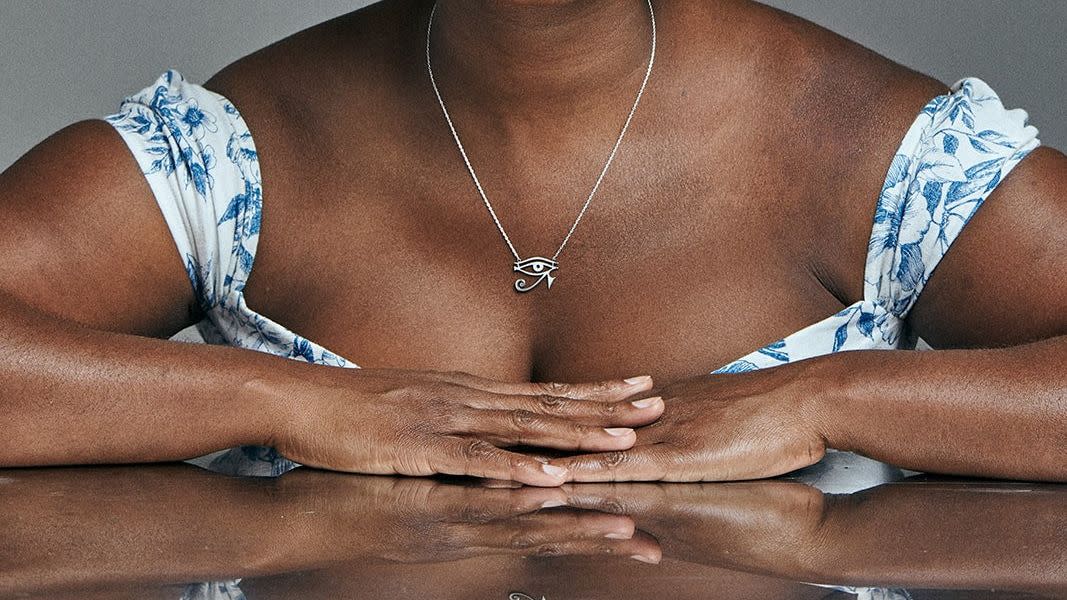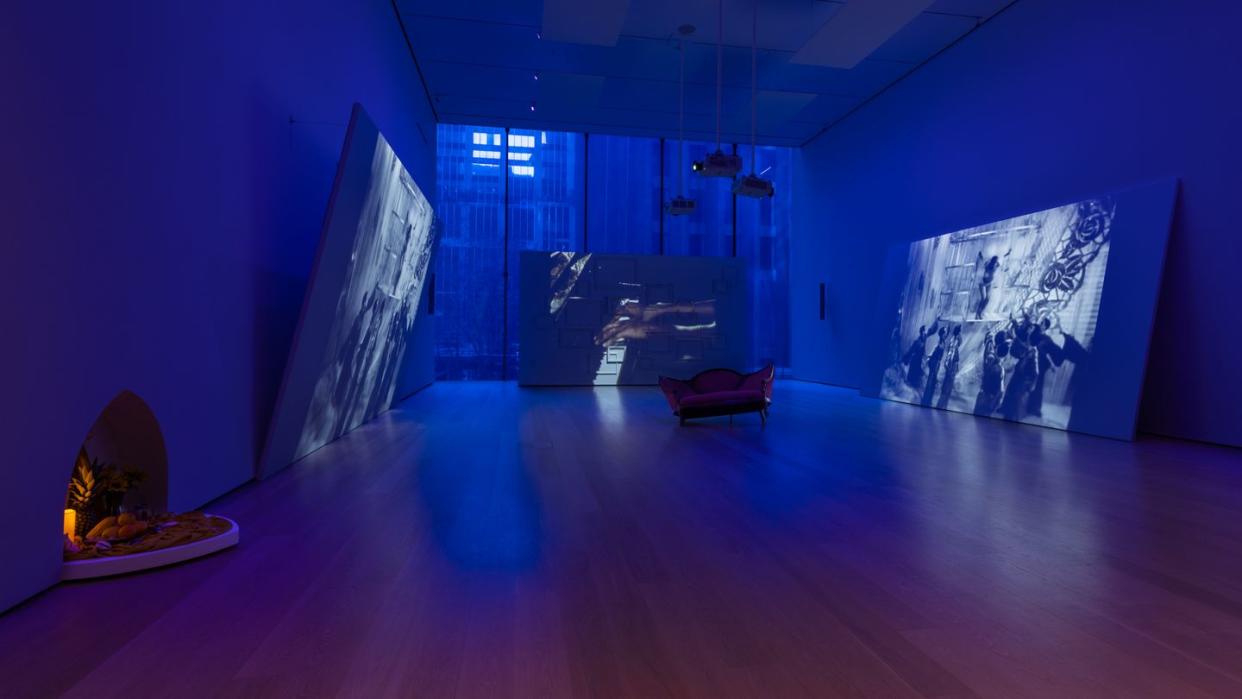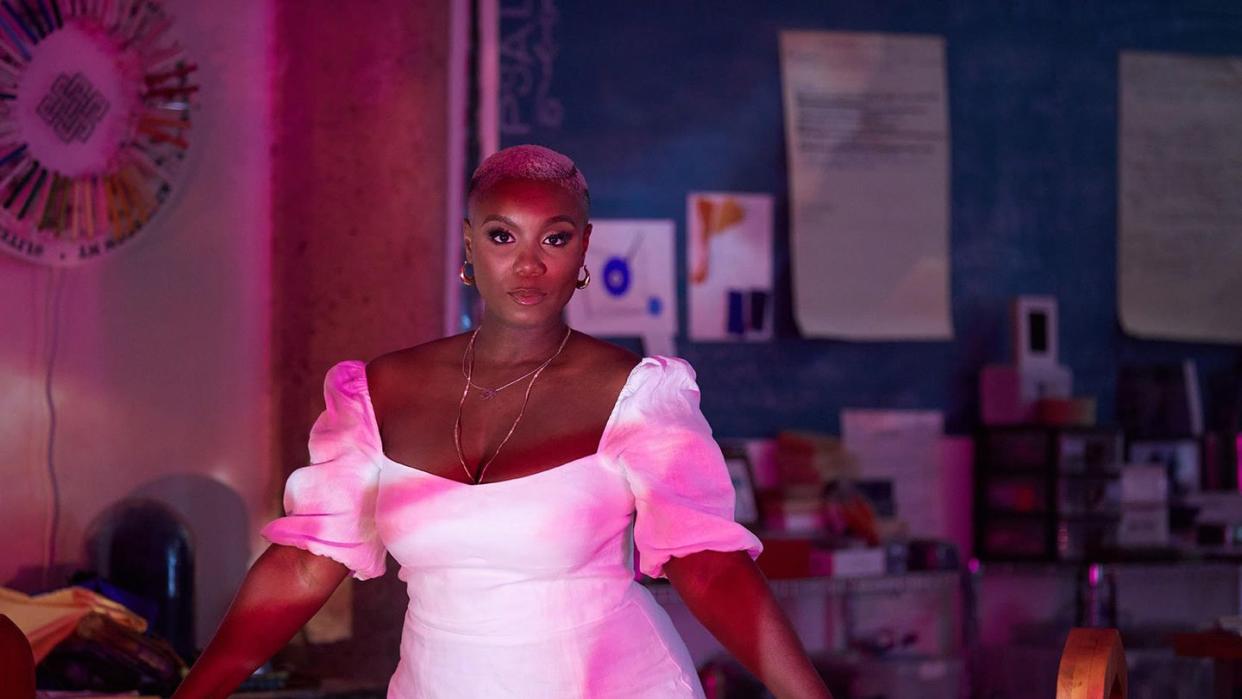Ja’Tovia Gary Moves Between Two Worlds

I have a running hypothesis that all Black women from Dallas know of each other. It was August 2023 and I was on my way to Philadelphia to interview the multimedia artist Ja’Tovia Gary. Gary’s from Dallas, like me, and I’d heard of her through other Black women in the city—with the promise that she was a monumental artist. Gary moved to New York City to pursue an MFA in social documentary filmmaking from the School of Visual Arts. While there, she started studying Blackness and Black feminism, and merging the two in her work. Since then, her work has become known for the way it unmasks notions of objectivity and neutrality through a Black feminist subjectivity. On display at the Whitney Museum, exhibited at Schomburg Center and L.A.’s Museum of Contemporary Art, and with short films played at the Edinburgh International Film Festival and more, Gary has solidified herself as one of the premier multidisciplinary artists of the moment. “The Giverny Suite,” her latest exhibition, is on display at New York’s Museum of Modern Art. That day in August, Gary would premiere Quiet As It’s Kept at the BlackStar Film Festival. Her film, 25 minutes, is an exploration of the magic and lore behind Toni Morrison’s debut novel, The Bluest Eye.

The film opens with a video of TikTok user @khaenotbae saying, “I literally told you chitterling-eating bitches, the girls that get it, get it; and the girls that don’t, don’t. Obviously you don’t get it, ’cause you’re not that girl.” It sets the tone for the themes Gary explores. Desirability, colorism, spirituality, beauty, cultural appropriation, and Black womanhood are analyzed, dissected, destroyed, and resurrected through a curation of TikToks, memes, animations, and excerpts of interviews with Professor Kokahvah Zauditu-Selassie, author of African Spiritual Traditions in the Novels of Toni Morrison and retired professor of English at Coppin State University, also known as Mama Koko. The film is a meditation on the legacies, lives, and experiences of Black women, a living memorial of the ways Black women die and rebirth themselves time after time.
I’ve always grown up with the belief that the power of life and death resides in the power of tongue. It’s a cultural euphemism uttered from the mouths of Black women in my family from generation to generation. It would not be until my 20s that I started to understand how the power behind that saying originates from an African ideology and mindset that precedes my Christian praying ancestors. I became a Black woman of the Ifá Òrìṣà tradition, the same tradition that Gary and Mama Koko work within. Although all three of us share a religious practice, Gary and Mama Koko are members of the same ile, meaning they are members of the same spiritual house and community, where they are in relationship with their god siblings (fellow devotees and disciples of the Ifá tradition) and godparents (priests and priestesses of the Ifá tradition). Although Ifá and the òrìṣà have begun to become part of the zeitgeist in recent years, due to projects such as Beyonce’s Black Is King and The Gift, where themes of òrìṣà and ancestral veneration were of peak relevance, iles in the United States have existed for generations, with some having direct connections to the Caribbean, Central America, South America, and Africa.
It was in the moments leading up to meeting Gary that I laid down on my mat to pray. I would be meeting Gary on Òsè Ifá, a sacred day for Ifá devotees, disciples, and practitioners to pay reverence to òrìsà through oríkì (praises), prayers, and chants. With each passing chant, I prayed with vigor for my ancestors to support me, to guide me, to grant me the ability to see Gary and the multitude of her in all things.
Gary, like Morrison, uses marigolds as a symbol in her work. The Bluest Eye famously contains the chilling lines “Quiet as it’s kept, there were no marigolds in the fall of 1941. We thought it was because Pecola was having her father’s baby that the marigolds didn’t come.” In the novel, marigolds represent the cycle of life and death. They are a physical reminder of the natural order of the universe. The life cycle of marigolds operates as a forewarning for sisters Claudia MacTeer and Pecola Breedlove, who believe the blooming of a marigold will bring about a healthy delivery for Pecola’s baby.
In a 2007 article published in The Journal of Pan African Studies, “Women Who Know Things: African Epistemologies, Ecocriticism, and Female Spiritual Authority in the Novels of Toni Morrison,” Dr. Zauditu-Selassie expounds on the significances of marigolds in The Bluest Eye.
“Morrison advances that planting is a spiritual creative activity and the resultant blossoms are dependent on ritual words. Claudia and Frieda’s attempt at magic using words indicates knowledge of the spoken word to contain vital force, the necessary spiritual element to make things happen. Furthermore, Morrison counters these assaults to the African personality such as Pecola’s perceived ugliness and her community’s confirmation of her aesthetic negation with her inscription of ritual performance and establishing continuities in belief using a gathering of cultural symbols,” she writes. In the installation that accompanies Gary’s film, marigolds are strewn around the screening room, troubling the passive experience of watching images with the ever-changing smell of flowers slowly dying.

Harper’s Bazaar: You have a beautiful way of thinking about time. In pop culture, it’s the multiverse and time isn’t linear, but I have felt that Black creatives have always done that. How did you play with the creation of this timeline in the film?
Gary: I see all of the work as this kind of flattening of the space. Geotemporal plane, time and space becomes this kind of question mark. It’s depending on what clip is situated next to the other clip.
We could be jumping from the 1930s to 2023. I think about [Pan-African studies pioneer] John Henrik Clarke—I’m gonna fuck up the quote, but he says something like: What happened 500 years ago is connected to what happened 50 years ago, which is connected to what happened five minutes ago.
There is this continuum that we lived through that things are not necessarily gone, the past is not gone, because it’s ever-present. Right?
As Mama Koko Islam talks about in the film, there’s these two planes—Black people operating in the material, in the immaterial world. This notion of the doppelgänger, this notion of ancestors in a room. They’re still here.
She’s able to talk to us about African ways of being. She’s talking about collectivity versus the kind of individualism that you find in the West that is a kind of linchpin of capitalism. She’s also able to talk about double consciousness and duality. But not just in a kind of like Du Bois–ian psychiatric way—also in this West African, spiritual way. Because we could look at [the fracture of time] as pathology … something that is being thrust upon us because of our experiences in white supremacy. [But] we can also understand that Black people have always moved between two worlds. We’ve always understood that there’s an immaterial and a material plane. We are not moving through life untethered to the past. There is a tradition that I exist in, and I’m often trying to talk about something that is enduring.
You know, white supremacy, patriarchy, capitalism—those things have not gone away. There’s always some new iteration that’s perhaps, maybe more sophisticated, or maybe is able to hide itself. But I’m interested in unmasking. How do those power dynamics continue? What are we doing in response to that? How can we attend to the past?
Number one: I love Mama Koko. I’ve taken a lot of classes by one of her [godchildren]. She’s not technically in her ile—I think just, like, an admirer of her. She runs Beaucoup Hoodoo.
That’s Shantrelle. She’s in our ile, but Mama Koko is not her godmother. Mama Koko’s godmother is her godmother. They’re technically godsisters.
Listen, somebody told me that [Mama Koko]’s the one and not the two, and I strongly agree.
The alpha and the omega.
[Mama Koko]’s very much that girl. She’s coming with an encyclopedic knowledge of literature. She’s coming with an encyclopedic knowledge of spirituality, African ontology, and embodied knowledge. She’s giving it to you.
Are those the reasons you decided to make her the anchor of the film?
Yes. She’s been in a number of people’s films. I knew that she was going to be able to have a presence and to bring forth the necessary energy to be able to anchor a film. Additionally, she has written a book about African spiritual traditions and how they show up in the novels of Morrison.
This work is a contemporary response to The Bluest Eye. I wanted someone who was gonna be able to speak about that kind of academic idea. There are the theories that are prevalent in the book, but also through a spiritual lens. Yes. She’s serving. She’s hitting multiple registers.
In fact, everything that we put on that timeline in the film is operating on multiple registers. This is gonna be some coded information. Some coded knowledge, ’cause that’s what culture is. It’s coded history. This is going to be about literacy. Did you read the text? Do you know the book? This is going to be about a certain type of interior knowledge that not everybody is going to get. You approach it however you can.
All of the clips, all of the people, all of the folks that we’ve spoken to, the material that we have apprehended—it’s hitting multiple registers, as is Mama Koko.
One thing I like about your film is you create your own reality that questions this reality. I think that’s a testament to Black filmmakers and having that broad perspective that comes from being a lot of different people all at once. It’s like you’re playing in a binary, but it’s not a binary.
I feel because I am someone who comes from communities that have been marginalized, it’s very easy for folks to say, Oh, you’re this or You’re that. I’m interested in kind of pulling back the layers of the thing and understanding the multivalent aspects of my lived experience, be it black, be it woman, be it queer, whatever.
It’s full-spectrum. We’re completely enraptured by the gradient, the spectrum of a thing. Understanding that that binary is very limited. It can be very dangerous and constraining, and it’s just not how life is. There’s always going to be a kind of gray area.
I want to show folks who look like us, folks who are watching these works, that we are not these kind of flattened tropes that are presented to us in the other types of films. That there is a kind of varied lived experience, and that’s also why the works … take on these—the shape of the thing is completely unheard of or perhaps unseen.
I want folks to think about the possibilities of crafting a new reality. The possibilities of crafting a whole new world. Do we have to live in a society that’s governed how it’s governed now, or can we completely wipe it away and start new? That is the role of the artist, is to bring about the notion of a new possibility.
You Might Also Like
